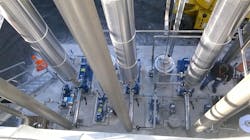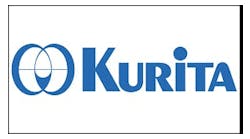Hazardous waste is normally defined as waste which is dangerous or potentially harmful to people or the environment, and can come in any form: solid, gaseous, sludge or liquid. Many vital materials such as cleaning products, pesticides and industrial chemicals are, by their nature, hazardous and therefore present disposal challenges, as do many industrial process chemicals and byproducts.
Historically, hazardous wastes have been treated by a number of different physical, thermal, chemical, and biological methods, including precipitation, high temperature incineration and even burial in specialist secure sites. One of the advantages of Zero Liquid Discharge (ZLD) over such techniques is the theoretical ability to separate unwanted materials from water, whether they are benign, hazardous, or toxic. The resulting solid residue is often more stable, making it suitable for recycling or landfill. A well-designed ZLD system should minimize or even eliminate liquid waste streams, resulting in clean water for reuse or environmentally friendly discharge, and a solid residue suitable for further processing (often to recover valuable components for use elsewhere) or for safe disposal.
Finding value in waste
Waste is increasingly being viewed as a resource. From well-established practices such as recycling paper and aluminum, to the development of the circular economy, an increasing volume of resources are now being recovered from materials that were previously seen only as inconvenient wastes.
Waste valorization is the process of recovering value from waste materials, for example through reusing or recycling them, or by composting or anaerobically digesting them and converting them into more useful products such as materials, chemicals, fuels, or other sources of energy. In a circular economy, compared to a linear one, the materials within products are reused, turning previously burdensome wastes into valuable resources.
Correct analysis is crucial to success
Various processes are employed in ZLD, including membrane bioreaction, reverse osmosis, electrolysis, filtration and more. However, evaporation is also a key process, both to concentrate residues sufficiently to allow their economic extraction or physical removal, and as part of the water purification process.
However, solid-liquid mixtures are complex, and it is important that the first stage of any potential project includes a research study to evaluate the nature of the waste stream/s and the saturation levels required. In laboratory experiments, HRS evaluates the maximum concentrations that can be reached for different temperature regimes. This then determines the type of equipment we design. For example, at high temperatures more salts may be dissolved, compared to low temperatures.
The importance of evaporation
HRS Heat Exchangers have been involved in ZLD projects in Europe using evaporation systems, including the recovery of potassium and sodium sulphates from organic brine waste streams. A typical HRS process might consist of three steps as follows:
- Evaporation/concentration (using one or more evaporators depending on the materials involved and the level of concentration required) to levels above the saturation point at high temperature.
- Cooling down of the product to provoke the formation of salt crystals.
- Further crystallization in specially designed tanks and separation of the crystals that are formed to allow them to be processed for use. In the third step, a supernatant layer of concentrated solution remains after separation of the crystals. This solution is returned to the second evaporator for concentrating again to above its saturation point.
Correct heat exchanger choice for product recovery
Both the evaporation and cooling steps result in a high degree of material fouling on the inside of the equipment, so HRS Unicus Series scraped-surface heat exchangers are used to maintain thermal efficiency and remove fouling as it occurs. Coupled with HRS R Series coolers and custom-designed crystallization tanks, the result is an efficient process which can work continuously without requiring scheduled downtime.
In the example above, two evaporators are used to concentrate and remove pure water from the solution, which can be used elsewhere. The coolers and crystallizers produce solid crystals, and the remaining solution returns to the evaporation process. No liquid waste remains after the process, so that as well as recovering valuable salts, waste management costs are also reduced.


